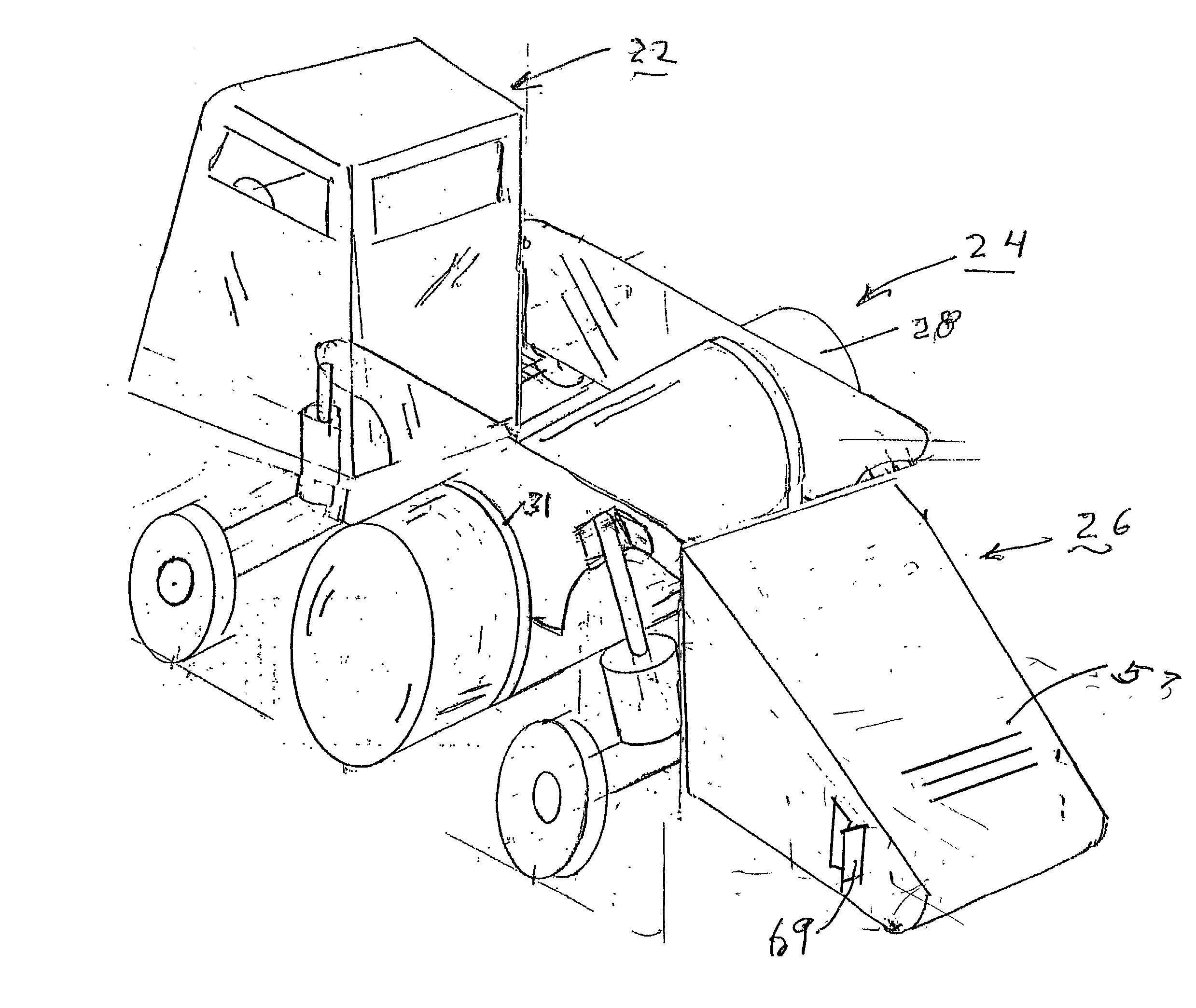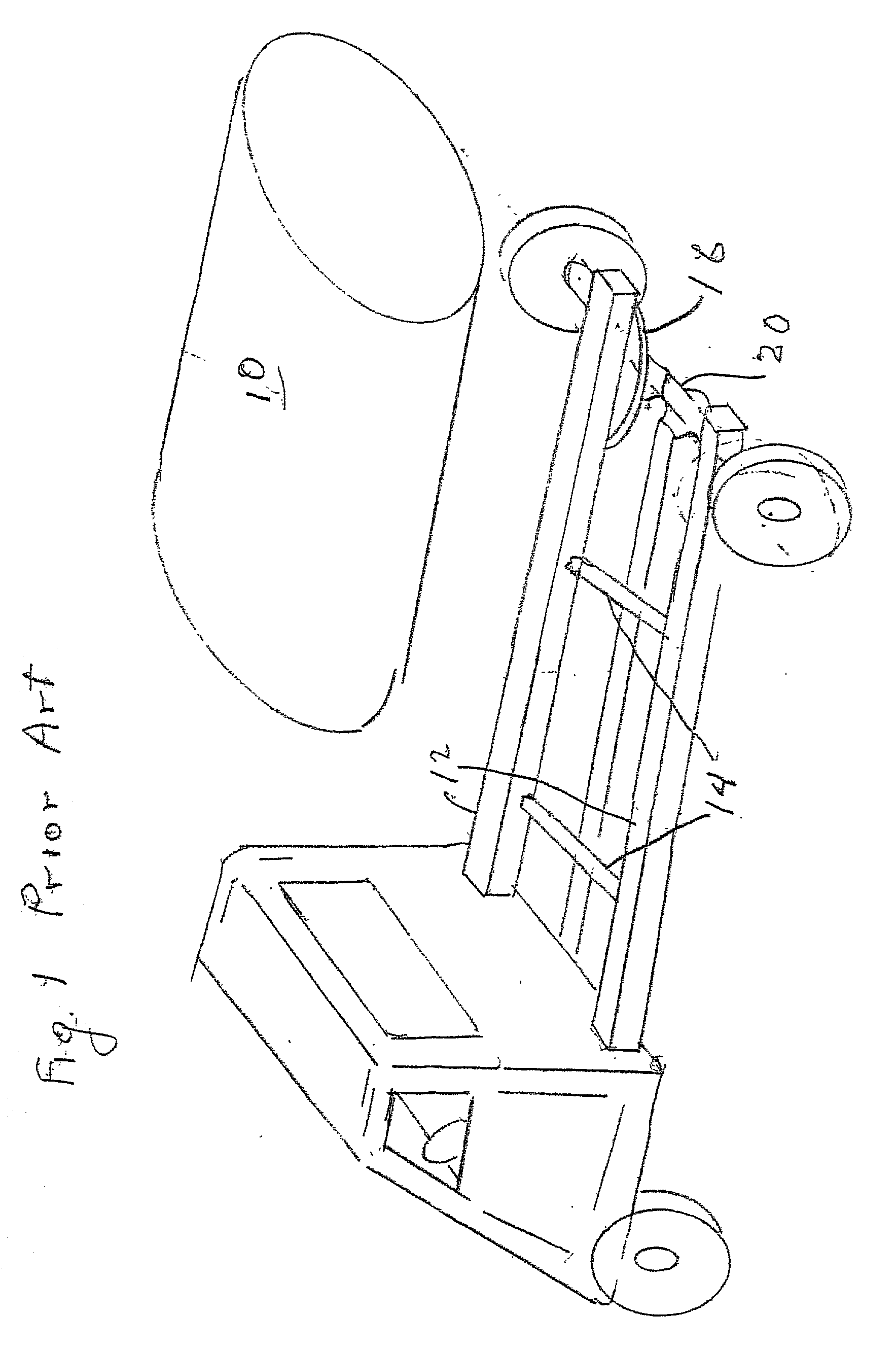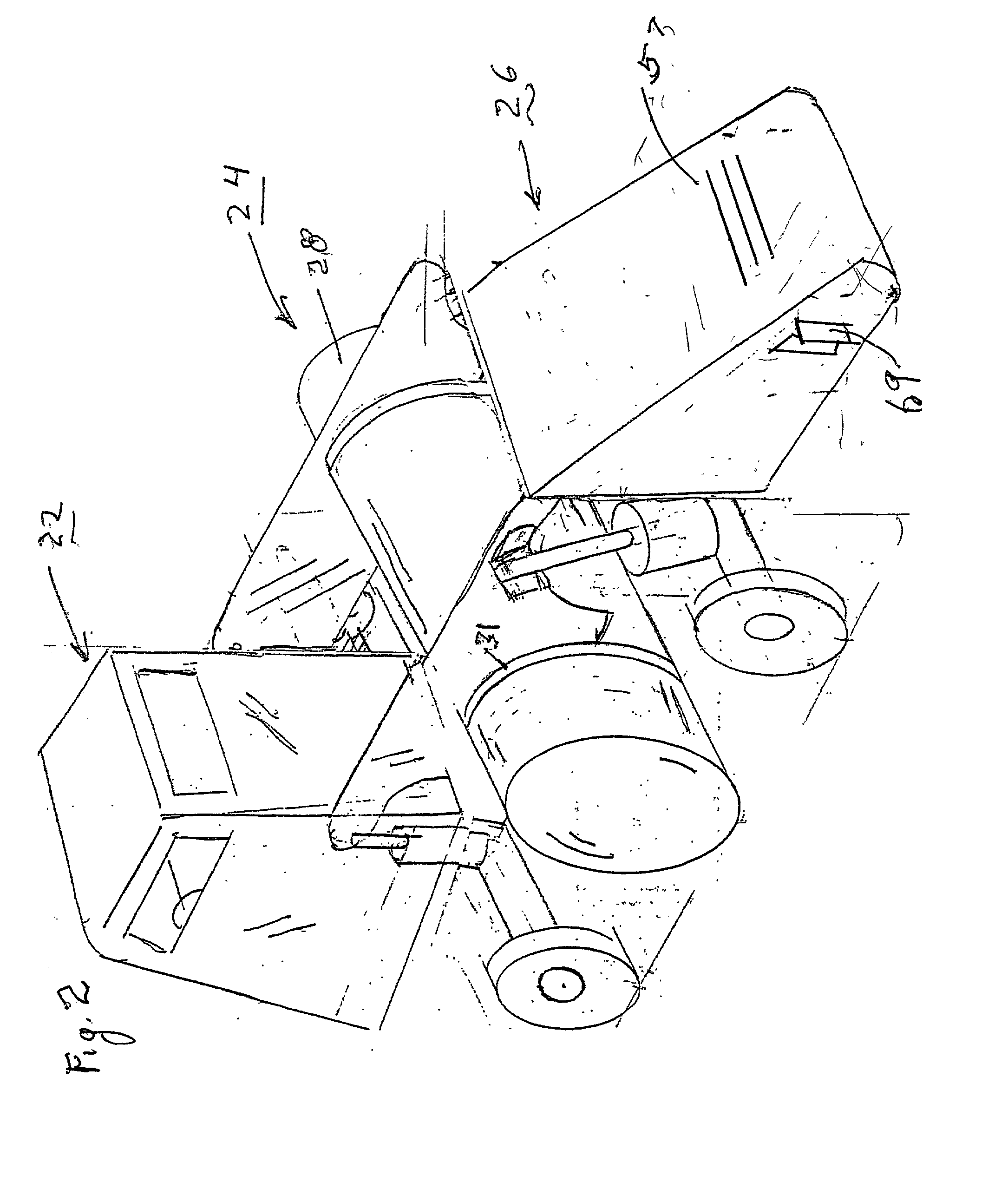Transport device for hauling a load
a technology for transporting devices and loads, applied in the field of transport devices, can solve the problems of inconvenient maintenance operations, the thickness of the elongated ladder frame, and the amount of liquid that can be pumped out of the tank
- Summary
- Abstract
- Description
- Claims
- Application Information
AI Technical Summary
Problems solved by technology
Method used
Image
Examples
Embodiment Construction
[0049] Turning now to a description of the drawings, FIG. 2 is a perspective view of the tank truck of this invention. There are shown a cab section 22, a carrier section 24 and an engine section.
[0050] One embodiment of the carrier section is presented to best advantage in FIG. 3. The carrier section includes a container and a pair of hanger members 30.
[0051] In FIG. 3, the container 28 is a cylindrical tank 28. The hanger members 30 are a pair of panels cut as yokes 30 and positioned to straddle the tank 28. One yoke 30 is close to one end of the tank opposite the other yoke 30 close to the other end of the tank 28.
[0052] As shown in FIG. 3 and to better advantage in the cutaway view of FIG. 6, the tank contains a pair of baffles 29 that are welded to the inside of the tank 28 coplanar with the yokes 30. Each baffle has openings 33 to permit free flow of the fluid inside the tank. 28.
[0053] Each yoke 30 is welded along fine 31 to the outside of tank 28.
[0054] The forward ends 32 o...
PUM
 Login to View More
Login to View More Abstract
Description
Claims
Application Information
 Login to View More
Login to View More - R&D
- Intellectual Property
- Life Sciences
- Materials
- Tech Scout
- Unparalleled Data Quality
- Higher Quality Content
- 60% Fewer Hallucinations
Browse by: Latest US Patents, China's latest patents, Technical Efficacy Thesaurus, Application Domain, Technology Topic, Popular Technical Reports.
© 2025 PatSnap. All rights reserved.Legal|Privacy policy|Modern Slavery Act Transparency Statement|Sitemap|About US| Contact US: help@patsnap.com



